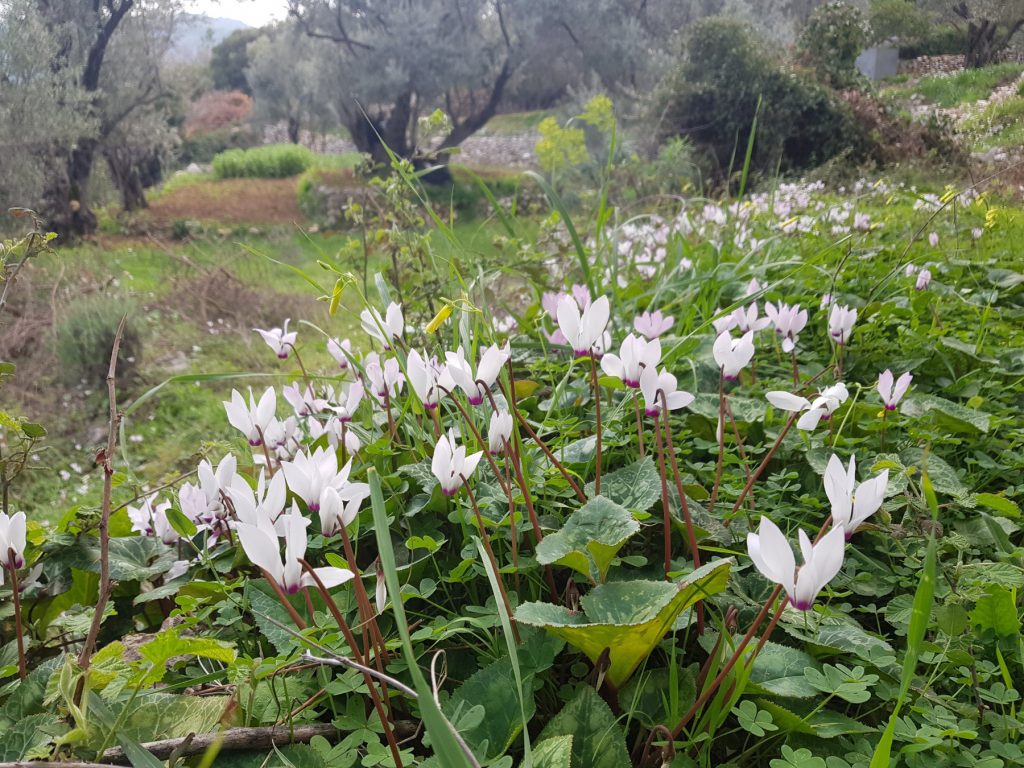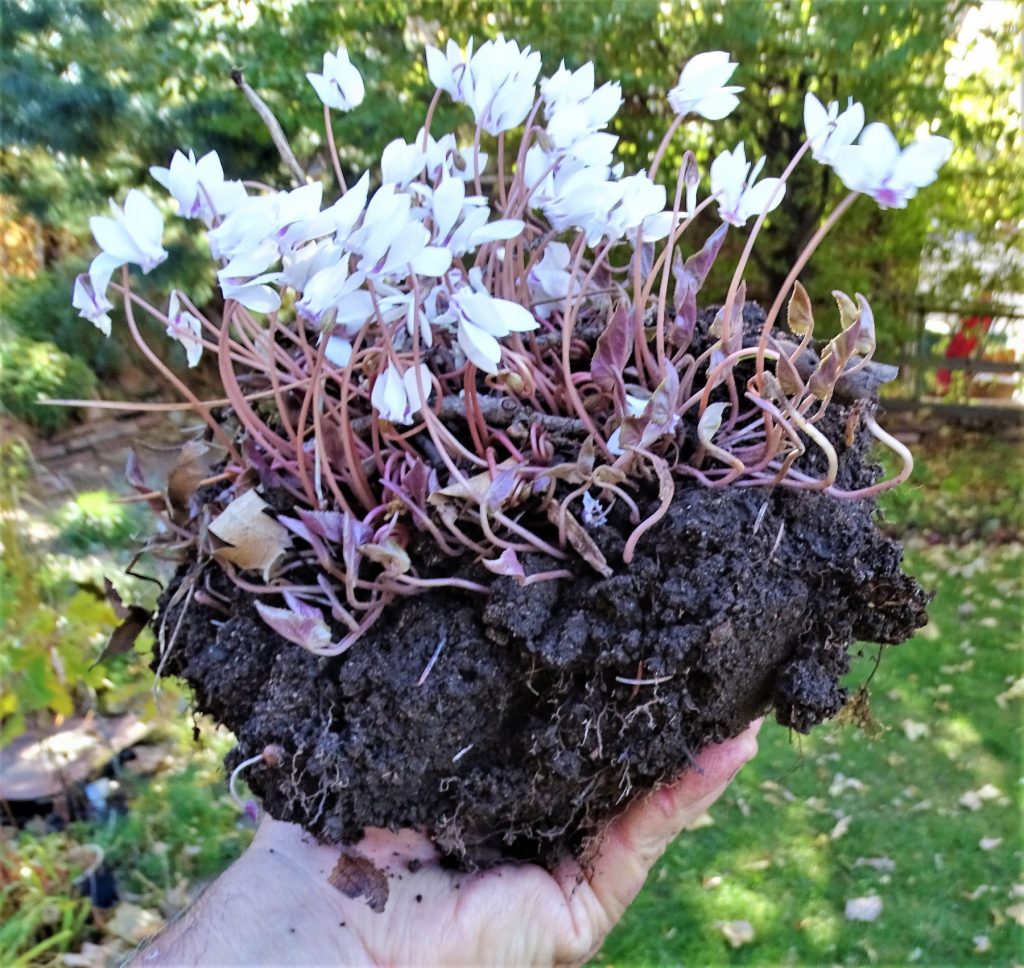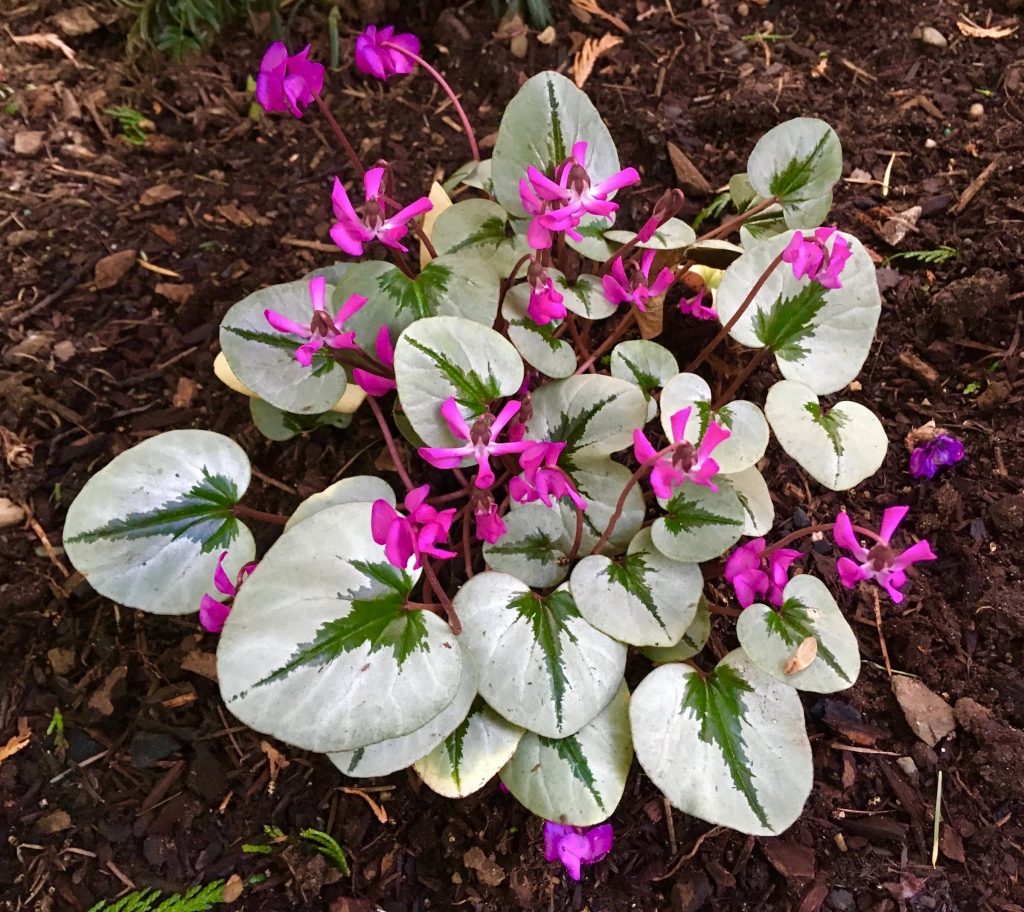Clocks may have had to spring forward but winter is still with us, yet that hasn’t stopped bulbs pushing their noses up through the compost, to remind us that underneath the soil there’s a garden waiting to bloom. Among the first to make their appearance in garden are two tiny tubers of Cyclamen hederifolium. Planted with hope on my part and settled in with determination on theirs, the snow has finally melted away to reveal last year’s little, green heart-shaped leaves on wiry stems as the plant waits, seeking the sun’s warmth. It’s been an on and off affair growing these little treasures. My first try was in England with plants bought in the local farmer’s market. A huge success! This was long before CITES (Convention on International Trade in Endangered Species of Wild Fauna and Flora) put an end to the plunder of cyclamen bulbs from meadows and fields across the Mediterranean.

Cyclamen, along with hyacinths, narcissus and tulips, were among the flowers most often grown in the fabled gardens of Persia, and were recognized as native to the woodlands of Italy. That is where I first saw naturalized carpets of Cyclamen hederifolium, the ivy leafed cyclamen, scattering dainty pink, star-like flowers in the heavy shade of the hunting park that surrounds the formal gardens of Castello di Celsa, a 15th-century castellated villa in southern Tuscany. The plant’s presence in herbals goes back at least that far, and the tuber was valued as a purgative, even though quite violent in its effects. The common name, ‘sowbread’ refers to the tubers being used as pig food. Imagine something so etherally beautiful being given such a prosaic use and name: function before form, I guess.
There are some 16 species of cyclamen, from the cold hardiest sort, C. hederifolium, to -20F in a protected place, to C. persicum, which can struggle to survive at 25F. The best survival rates are in shaded spots beneath trees and shrubs where the soil is dried out. Leave nature’s mulch (ie. fallen leaves and twigs), however, cyclamen resent competition, so until the plants are established, keep weeds clear. In areas with intense sun and deep cold winters – like the Front Range of the Rockies – plant the tubers at least six inches deep (note to self!).

Flowers precede foliage, and the seed pods appear soon after flower drop. The pods are small orbs at the end of curlicued pedicels; when the seed is ripe the stems uncurl like an unwound spring, the pod bursts and the seeds are scattered some small distance from the parent…an endearing feature! Fresh seed germinates quite quickly, I have found, and takes up to three years to mature to flowering. It’s well worth the wait for the surprise of discovering what the foliage and flower will be like; it’s possible to divide a mature tuber so that each chunk has a bud or two, but it’s not advised. A more in-depth, and authoritative, growing-guide to cyclamen comes with the catalogue from Hansen Nursery in Oregon. Their plants are grown from seed gathered from the nursery stock, and the list of available plants – not cyclamen alone—is impressive. If you’re not in a hurry and interested in having particular foliage colors or patterns (and C. coum offers some of the most striking sorts), that can be requested. Once you get started, take it from me, it’s not easy to rein in the urge to collect. Take it from Panayoti Kelaidis, a renowned plantsman and senior curator at Denver Botanic Gardens: “I doubt that any one genus of plants blooms for more months a year for us than Cyclamen: we can have one or another species blooming every month of the year. Moreover, the gorgeous foliage almost upstages the shimmering flowers.”
It really does, you know.

Ethne Clarke, 2021
CITES explained can be found at: https://cites.org/eng/disc/what.php
Visit Hansen Nursery for a close look at cyclamen: https://hansennursery.com/
Travel the plant world with Panayoti Keliadis by following his highly informative…and entertaining…blog: http://prairiebreak.blogspot.com/
Take a tour around all that the Denver Botanic Garden has to offer: at https://www.botanicgardens.org
Learn more about the Greek plantsman, Eleftherio Dariotis, aka Liberto Dario, his nursery and seed program by joining him at https://www.facebook.com/liberto.dario










